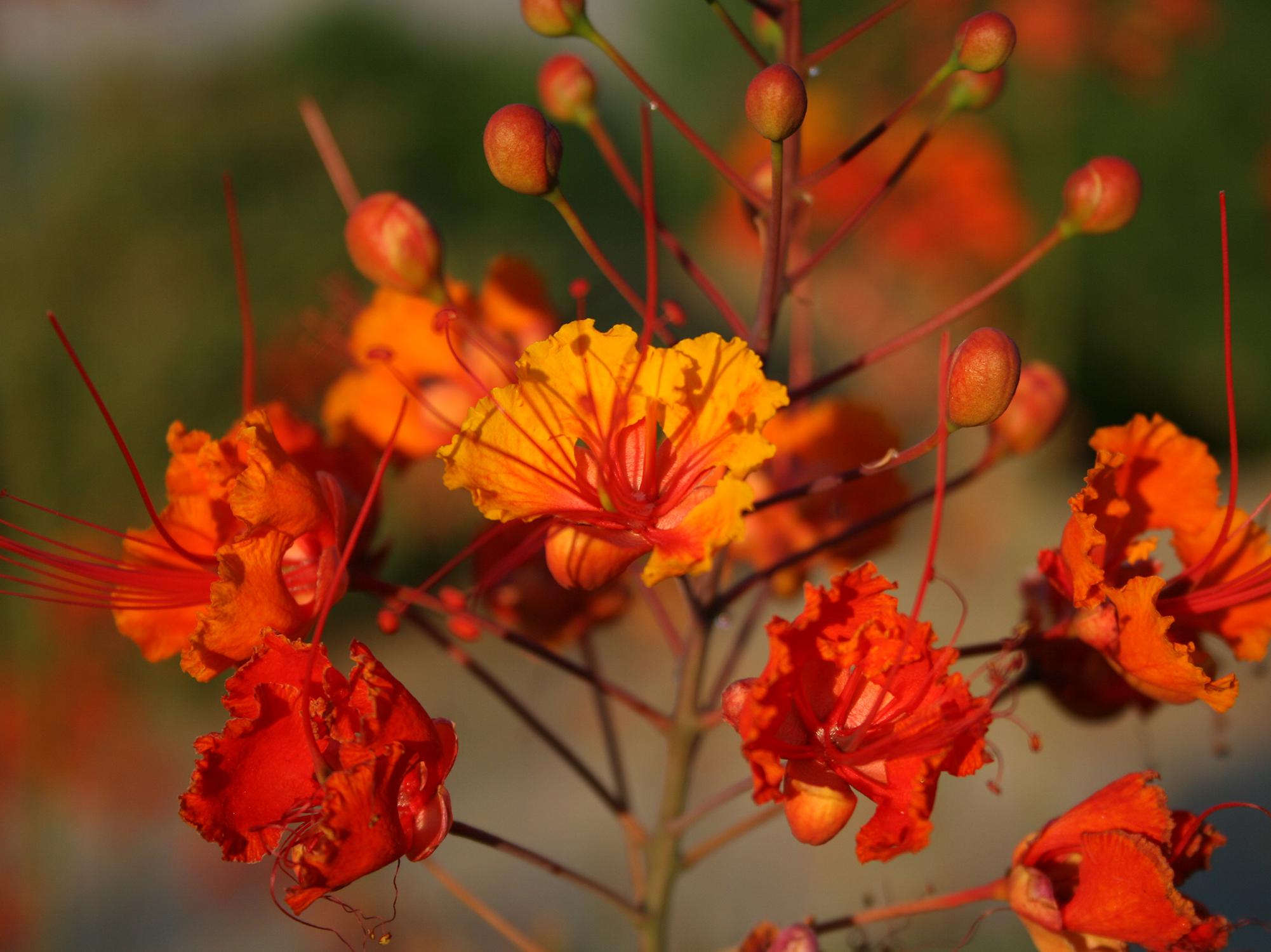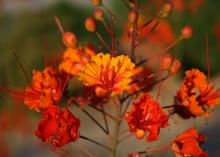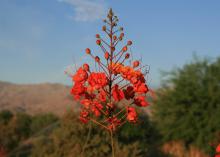Information Possibly Outdated
The information presented on this page was originally released on July 29, 2019. It may not be outdated, but please search our site for more current information. If you plan to quote or reference this information in a publication, please check with the Extension specialist or author before proceeding.
Pride of Barbados adds orange color to landscape
While Pride of Barbados thrives in deserts and the tropics, I believe we could also appreciate its beauty in Mississippi landscapes.
I saw one of these plants showing off last week in Las Vegas, away from all the activity of the Strip. I gave presentations on various subjects at the annual American Society for Horticultural Science Annual meeting, including maintaining a work/life balance and my ongoing search for the elusive Long Beach Red Radish. I also presented data we’ve been generating for the homeowner on growing vegetables in EarthBoxes.
Weatherwise, it was vastly different from Mississippi. Even though the daytime temperatures were over 100 degrees, I really enjoyed the low humidity, in the 10% to 12% range. My wife told me 6.73 inches of rain fell on my Ocean Springs landscape in the span of two hours -- more than the 4.25 inches that falls on Las Vegas in a typical year.
Known botanically as Caesalpinia pulcherrima, the stunning plant I saw there has other common names like Peacock Flower and Mexican Bird of Paradise. Whatever you call this plant, it is absolutely beautiful.
The flowers are displayed in terminal clusters that have a pyramidal shape. The individual flowers are a bright orange and red with a golden tinge on the petal edges. Each flower has attractive showy petals and a group of long, red stamens prominently extending outward. In a way, I find them very reminiscent of deciduous azaleas.
The oval-shaped leaflets are double compound and fern-like and can be up to 1 foot long. The branches, including the stems and petioles, can be a little prickly because of the sharp spines. Because of these spines, the plant is used as a barrier in its native Barbados and other Caribbean islands.
While this plant has a growth potential of up to 10 feet in its natural habitat, it won’t get that big grown here. Data suggests that this plant could be a hardy perennial in zone 8B, with the top dying back to the ground. But I’d be willing to bet that our cool and damp winters would be detrimental, and growing the plant as an annual would be a better option.
I’m going to consider growing it as a fast-growing annual in my large container garden. This will optimize the root zone drainage. Planting in a well-drained, raised-bed system would work just as well.
The information I found indicates that Pride of Barbados is fairly easy to start from seed, especially if the seeds are scarified. Scarification can be accomplished using a nail file to nick the seed and allow easier water uptake and germination. Seeds are available from a variety of online sources.
Butterflies and hummingbirds love the gorgeous orange-red flowers. Pair with butterfly weed for an irresistible combination. What an interesting addition to my butterfly garden Pride of Barbados will be in 2020.




